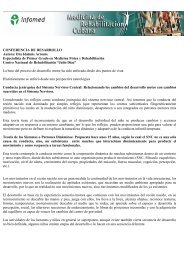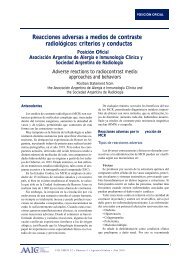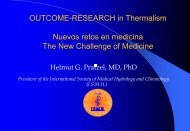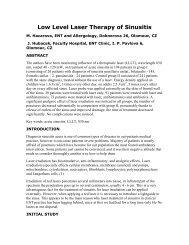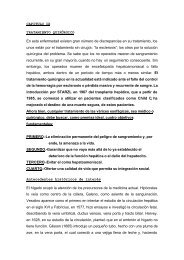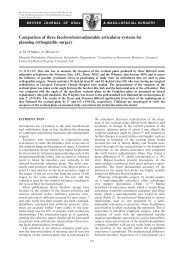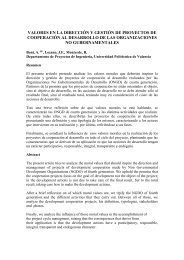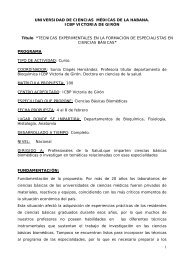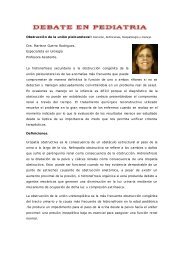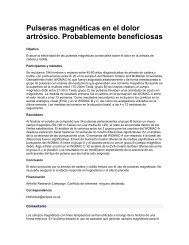pharmacology of medicinal plants and natural products
pharmacology of medicinal plants and natural products
pharmacology of medicinal plants and natural products
You also want an ePaper? Increase the reach of your titles
YUMPU automatically turns print PDFs into web optimized ePapers that Google loves.
S108<br />
S. A. DAHANUKAR et al.,<br />
<strong>of</strong> Neutron Activation Analysis (NAA) <strong>and</strong> Atomic Absorption<br />
Spectroscopy (AAS). The elements Mn, Na,<br />
Cl, Al, Cu, Pb, Ni, Cr, Cd, Fe, Ca, Zn <strong>and</strong> Hg were<br />
found to be present in different <strong>plants</strong> in various proportions<br />
264 .<br />
23. Modern correlates for st<strong>and</strong>ardisation<br />
An attempt has been made by Uchil et al 265 to develop<br />
a battery <strong>of</strong> st<strong>and</strong>ardization tests using modern<br />
technology for commonly used organometallic<br />
preparations (bhasmas) <strong>and</strong> compare them with the<br />
Ayurvedic tests. Seven preparations <strong>of</strong> copper<br />
bhasma manufactured by different companies were<br />
screened using both the methods. The results revealed<br />
that only 3 preparations could fulfil at least 3<br />
<strong>of</strong> 4 criteria as described in Ayurvedic textbooks.<br />
However, all <strong>of</strong> them differ with respect to particle<br />
size, bulk densities, copper content <strong>and</strong> presence <strong>of</strong><br />
chemical groups <strong>and</strong> complexes when tested using<br />
modern correlates. None <strong>of</strong> them showed presence<br />
<strong>of</strong> elemental copper. These data reveal the necessity<br />
<strong>of</strong> development <strong>of</strong> modern correlates for st<strong>and</strong>ardisation<br />
<strong>of</strong> Ayurvedic formulation to add precision<br />
to quality control, to detect false claims <strong>and</strong> adulteration<br />
<strong>and</strong> to predict their adverse drug reactions.<br />
24. Conclusion<br />
We see a definite change in the pattern <strong>of</strong> research<br />
on <strong>medicinal</strong> <strong>plants</strong>. Our findings are listed below :<br />
There is a growing interest in correlating phytochemical<br />
constituents <strong>of</strong> a plant with its pharmacological<br />
activity 266,267 . Scientists have even started correlating<br />
the botanical properties <strong>of</strong> <strong>plants</strong> with their pharmacological<br />
activity as seen from the work on by<br />
Rawat et al 146 . In future, more co-ordinated multidimensional<br />
research aimed at correlating botanical<br />
<strong>and</strong> phytochemical properties to specific pharmacological<br />
activities is expected.<br />
In terms <strong>of</strong> pharmacological activity, more attention<br />
has been paid to CNS-active, cytoprotective,<br />
immunomodulators <strong>and</strong> chemotherapeutic plant<br />
<strong>products</strong>. Nutraceutics have opened up an entirely<br />
new field for exploration <strong>and</strong>, in the near future, dietary<br />
modulation <strong>of</strong> diseases may emerge as an alternative<br />
mode <strong>of</strong> therapy. At the same time a decreasing<br />
trend has been noticed towards evaluation<br />
<strong>of</strong> <strong>plants</strong> for their effects on the autonomic nervous<br />
system or fertility control.<br />
With the advances in cellular biology, a shift towards<br />
studying changes in cytosolic enzyme activities, DNA<br />
patterns <strong>and</strong> genetic control has been observed<br />
rather than concentrating merely on the gross effects<br />
induced by the plant drugs,<br />
In addition to the proper utilization <strong>of</strong> technological<br />
advances, a logical interpretation <strong>of</strong> the codified language<br />
<strong>of</strong> traditional medicine also becomes a necessity<br />
in order to further promote research in this<br />
field. The work done on rasayana group <strong>of</strong> <strong>plants</strong> 211<br />
is a good example <strong>of</strong> the above statement. Here, the<br />
authors have attempted to interprete the word<br />
‘rasayana’ in modern scientific terminology <strong>and</strong> have<br />
taken into consideration the advocated uses for this<br />
group <strong>of</strong> <strong>plants</strong> as per Ayurvedic textbooks while designing<br />
their research protocol. This underst<strong>and</strong>ing<br />
triggered the subsequent research work that was<br />
aimed at evaluating the immunostimulant potential<br />
<strong>of</strong> the rasayana group <strong>of</strong> <strong>plants</strong> <strong>and</strong> now, we have<br />
indigenous immunostimulants available, at affordable<br />
rates, in the Indian market.<br />
However, there is a flip side too:<br />
Very few articles published in the last 5 years have<br />
provided adequate information on the procedures<br />
adapted by the researchers for quality assurance <strong>of</strong><br />
the plant <strong>products</strong>. Any publication related to phyto<strong>pharmacology</strong><br />
should ideally provide data on the<br />
authentication <strong>and</strong> st<strong>and</strong>ardisation <strong>of</strong> the plant <strong>products</strong>.<br />
Not all the research areas selected by the scientists<br />
were relevant to needs <strong>of</strong> our country. Infections like<br />
tuberculosis, malaria, diarrhoea, AIDS <strong>and</strong> malnutrition<br />
are some <strong>of</strong> the major problems <strong>of</strong> our country.<br />
However, these areas have not been extensively explored.<br />
Majority <strong>of</strong> the drugs are at the experimental stage<br />
<strong>and</strong> have to still undergo clinical trials. In 1982,<br />
Dr.Satyavati had expressed need for well planned<br />
clinical studies. 16 years later, the status has not<br />
changed. There is still a paucity <strong>of</strong> clinical studies<br />
which are carried out in r<strong>and</strong>omized, controlled, double<br />
blind manner.<br />
Today, concurrent consumption <strong>of</strong> drugs from different<br />
disciplies is a common finding. Very few studies,<br />
however, address the problem <strong>of</strong> drug interactions,<br />
if any. In view <strong>of</strong> this, two studies documenting




